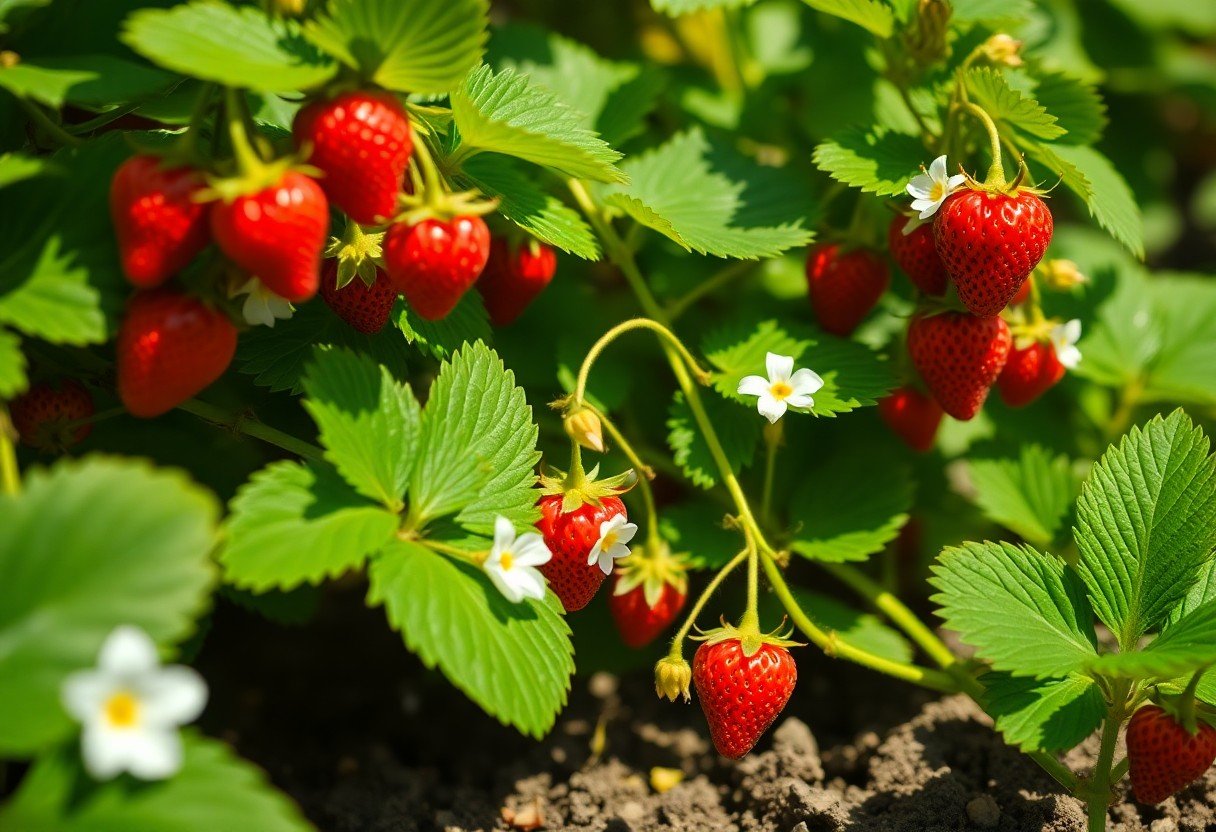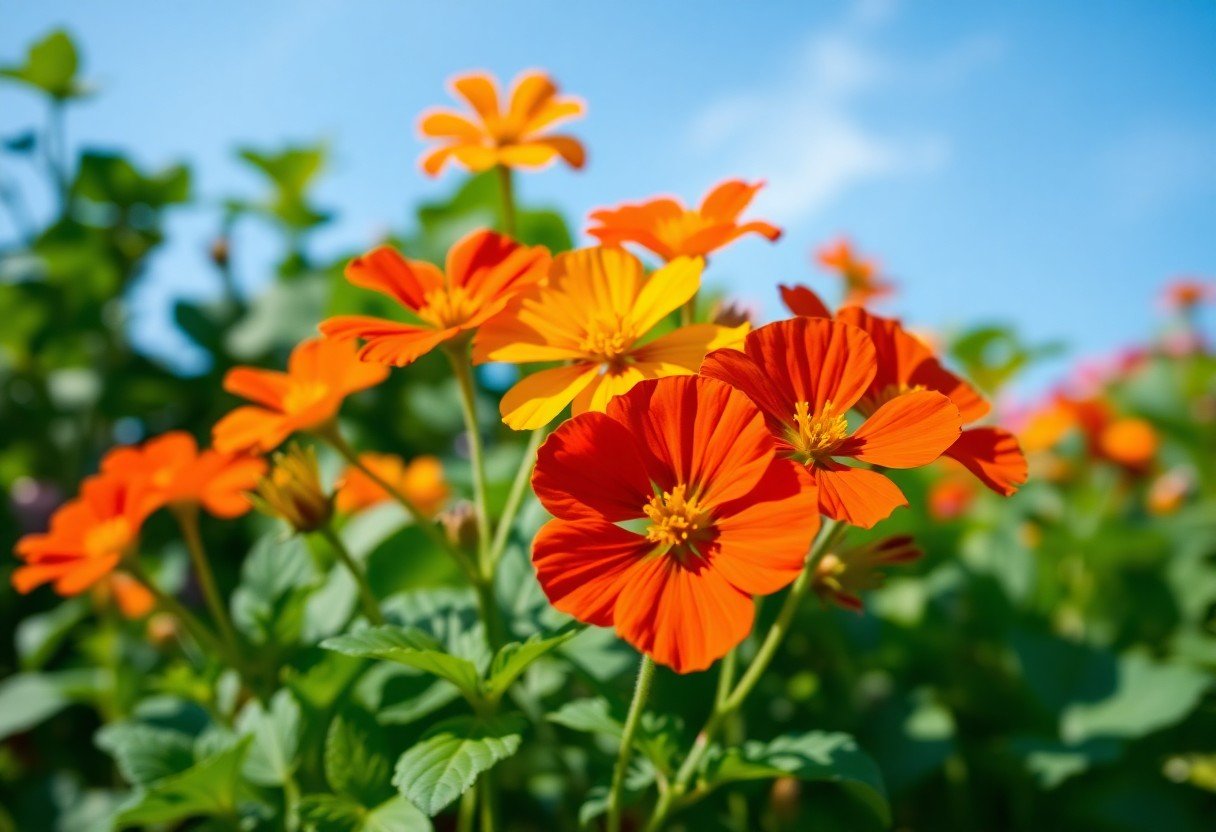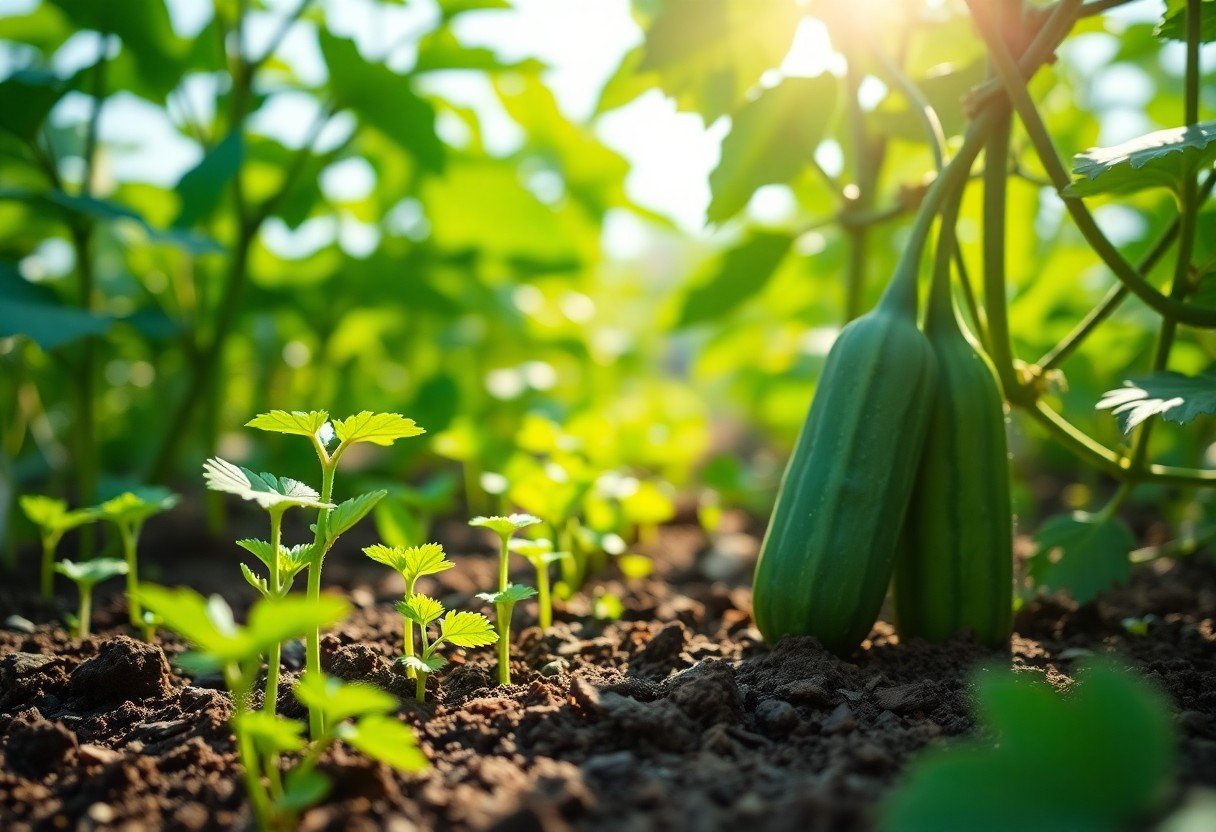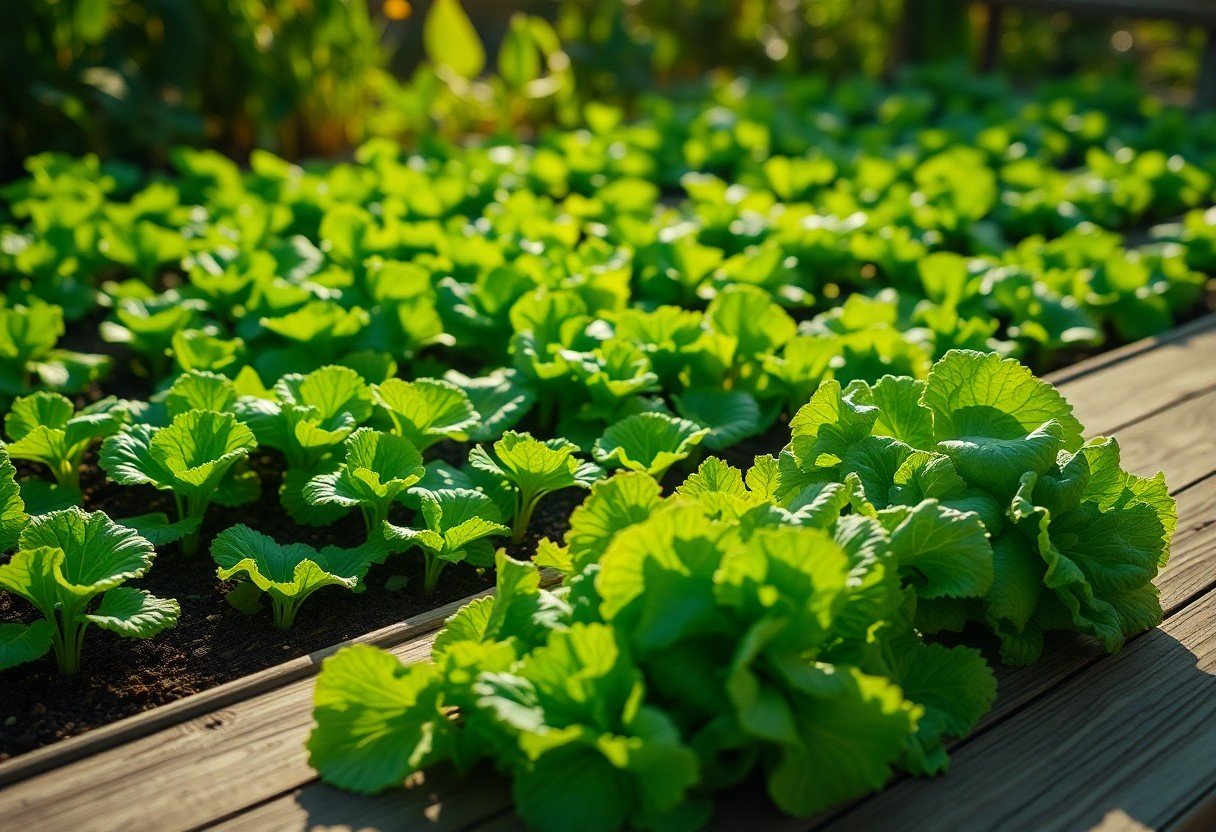Over the course of your gardening journey, learning how to cultivate the perfect peppers can be a rewarding experience. From selecting the right seeds to understanding the intricacies of planting and caring for your plants, each step contributes to a bountiful harvest of sweet, flavorful peppers. In this guide, you will discover imperative tips and techniques that will empower you to successfully grow peppers in your garden, ensuring that every pepper you pick is bursting with sweetness and flavor.
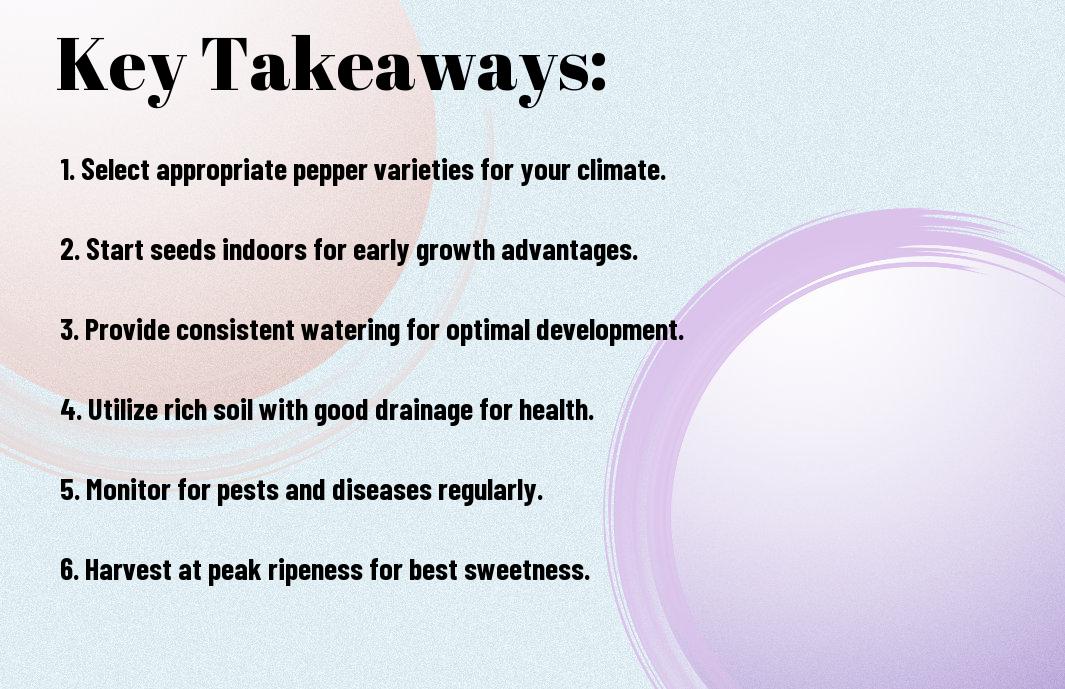

Understanding Pepper Varieties
For anyone looking to grow peppers, understanding the various types available can enhance your gardening experience and yield sweeter fruits. The sweet pepper category, which includes beloved varieties, is necessary for salads, cooking, or snacking. When opting for sweet peppers, consider traits such as flavor, size, and color. Explore a few popular varieties to help inform your choices:
Sweet Pepper Types
| Variety Name | Description |
|---|---|
| Bell Pepper | Sweet and crunchy, available in colors like green, red, yellow, and orange. |
| Sweet Banana Pepper | Long, mild peppers great for pickling or using fresh in dishes. |
| Hatch Pepper | A flavorful variety from New Mexico, ideal for roasting and stuffing. |
| Corno di Toro | A long, tapered Italian pepper with a sweet, juicy flavor. |
| Pimento | Small, heart-shaped peppers, often used in stuffings and salads. |
- Understanding each variety’s characteristics will help you select the best for your garden.
- Growing conditions can influence sweetness and size, so adjust care techniques accordingly.
- Perceiving the differences between these sweet varieties empowers you to make informed planting decisions.
Types of hot peppers can offer a different growing experience, allowing you to add more heat to your culinary creations. Hot peppers can vary in heat levels, flavors, and uses. When choosing hot peppers, it’s necessary to familiarize yourself with the Scoville Scale, which measures the pungency, or heat, of chili peppers. This guide below showcases some popular hot pepper varieties that you might want to consider:
Hot Pepper Types
| Variety Name | Description |
|---|---|
| Jalapeño | A versatile pepper known for its moderate heat and rich flavor. |
| Serrano | Spicier than jalapeños, commonly used in salsas and sauces. |
| Habanero | Famous for its fruity flavor and intense heat, often used in hot sauces. |
| Cayenne | Slender, spicy peppers that can be dried and ground into powder. |
| Ghost Pepper | One of the hottest peppers in the world; use cautiously. |
- Knowing the heat levels and flavors will help you choose the appropriate variety.
- Specific growing conditions can impact the overall heat and size of the peppers.
- Perceiving these hot pepper types will enhance your cooking by adding diverse heat profiles.
Pepper plants can thrive in various climates, but they generally favor warm weather and well-drained soil. By selecting the right type of pepper, you can make the most of your garden space. Below are some vital aspects of cultivating hot peppers:
| Aspect | Description |
|---|---|
| Soil | Well-drained, rich in organic matter, with a pH between 6.0 and 6.8. |
| Watering | Regularly but do not let the soil become soggy; consistent moisture is key. |
| Sunlight | Full sun for at least six hours per day is ideal for vigorous growth. |
| Spacing | Plant at least 18-24 inches apart to allow for ample growth and air circulation. |
| Harvesting | Pick peppers when they are firm and bright in color, enhancing flavor and sweetness. |
- Adjustments to light, soil, and water will influence your yield’s quality and quantity.
- Proper care can lead to a fruitful harvest, filled with heat and flavor.
- Perceiving your plants’ needs is vital for cultivating successful hot pepper crops.

Optimal Growing Conditions
Clearly, optimizing the growing conditions for your peppers is imperative for achieving a bountiful harvest. This includes understanding the climate and temperature your plants thrive in, along with the specific soil requirements that not only support growth but also enhance flavor. By tailoring these elements to suit your peppers, you significantly increase your chances of cultivating vibrant, flavorful produce straight from your garden.
Climate and Temperature
An understanding of the climate and temperature preferences of peppers can make a substantial difference in your gardening success. Generally, peppers enjoy warm conditions, thriving best in temperatures between 70°F and 90°F (21°C to 32°C). A table below highlights the ideal temperature ranges for various growth stages:
| Growth Stage | Ideal Temperature (°F) |
|---|---|
| Germination | 75 – 85 |
| Seedling | 70 – 80 |
| Vegetative | 70 – 90 |
| Fruit Development | 70 – 85 |
Below, you’ll find suggestions for the ideal soil conditions to ensure optimal growth for your peppers. Peppers prefer a well-draining, nutrient-rich soil with a pH level between 6.0 and 6.8. This allows for the optimal absorption of imperative nutrients, while good drainage prevents issues like root rot. Incorporating organic matter like compost can significantly enhance soil fertility and structure, creating a welcoming environment for your plants.
Soil Requirements
The right soil composition is key to ensuring your peppers receive the nutrients they need for robust growth. Sandy loam soil often provides an excellent balance of drainage and moisture retention, both imperative for healthy root development. Additionally, consider conducting a soil test before planting to assess nutrient levels and pH balance, which allows you to amend your garden soil accordingly for the best possible results.

Sowing Seeds
Now that you’re excited about growing your perfect peppers, it’s time to explore into the first steps of the journey: sowing seeds. This necessary phase sets the foundation for your future harvest; the right approach can make a significant difference in your yields and pepper quality. As you commence on this process, ensure that you have everything in place, from seed selection to the right environment for germination. Understanding these aspects will not only enhance your confidence but also allow you to grow a robust crop that thrives in your garden.
Seed Selection
After you have decided to grow peppers, your next step is to select the right seeds. There are numerous varieties available, ranging from sweet bell peppers to spicy jalapeños, each with unique flavors and heat levels. When choosing seeds, consider your taste preferences, as well as the growing conditions in your area. Look for reputable seed retailers who can provide reliable sweet pepper options, ideally ones that are suited to your local climate and soil type. This will ensure that your plants have the best chance at thriving from the outset.
Germination Process
Along with selecting high-quality seeds, you need to prepare for the germination process, which is vital for your planting success. The right temperature, moisture, and light conditions can significantly affect how quickly your seeds sprout and grow. Aim for a warm environment, ideally between 70°F and 85°F, as peppers thrive in these temperatures. Keep the soil consistently moist but not soggy, and provide adequate ventilation to prevent mold growth. Germination typically takes about 7 to 21 days, depending on the variety and conditions. Be patient during this phase; ensuring a stress-free environment will lead to stronger seedlings.
With your seeds in the right environment, the germination process begins, and you’ll notice little sprouts breaking through the soil surface. This early stage is critical for your peppers, so check them daily to maintain optimal conditions. If you notice uneven growth or issues with moisture, adjust accordingly to support your seedlings. Once they have developed a few true leaves, you’ll be ready to move them to larger containers or directly into your garden. Keep nurturing them during their early life to lay the groundwork for a fruitful pepper harvest.
Care and Maintenance
Keep in mind that proper care and maintenance are key to growing healthy, sweet peppers. Consistent watering and adequate nutrition will help your plants thrive throughout their lifecycle, from germination to harvest. Pay attention to the specific needs of your pepper variety; bell peppers, for instance, typically need more water than hot peppers. When the soil begins to dry out a few inches below the surface, it’s time to water. Ensuring that your plants receive about 1-2 inches of water per week is generally a good rule of thumb. You can also use mulch to help retain soil moisture and regulate temperature.
Watering and Fertilizing
Below all the fundamental aspects of watering and fertilizing your peppers come into play. When watering, always aim for the base of the plant, rather than overhead, to minimize the risk of fungal diseases. A well-drained soil helps prevent root rot and promotes healthy growth. For fertilizing, a balanced fertilizer high in potassium is ideal, particularly during the flowering and fruiting stages. This nutrient supports optimal fruit development, helping your peppers reach their full sweetness potential. Incorporate a slow-release fertilizer into the soil at planting time, and consider side-dressing with compost throughout the growing season.
Pest and Disease Management
Against the backdrop of nurturing your pepper plants, keeping an eye out for pests and diseases is important. Common culprits include aphids, spider mites, and aphids, which can damage your plants and reduce yields. Make it a habit to inspect your peppers regularly; early detection can make all the difference in managing infestations. Consider using insecticidal soap or neem oil as a natural remedy to combat these pests. Additionally, rotating your crops each season can help reduce the buildup of diseases in your soil, while fostering a more balanced ecosystem conducive to healthy plant growth.
At the same time, being vigilant about your plants’ health will enable you to spot signs of disease, such as wilting leaves or discoloration. Fungal issues like blossom end rot can be addressed through consistent watering and the addition of calcium to your soil. Moreover, ensure that your plants have good airflow between them to prevent moisture from lingering, which can lead to issues like powdery mildew. By taking these preventive measures, you set your peppers up for a wonderfully sweet and bountiful harvest.
Harvesting Peppers
Signs of Ripeness
Your peppers will signal when they’re ready for harvest through several key indicators. Start by looking for vibrant color changes; sweet peppers transition from green to shades of red, yellow, or orange, depending on the variety. Additionally, the surface of the peppers should appear firm and glossy. It’s also important to assess the size; when they reach the expected dimensions for their specific type, it’s generally a good indication that they are ripe and ready for picking.
An important part of knowing when to harvest is the overall health of the plant. If your peppers are growing evenly and without blemishes, they are more likely to be ripe. You may also want to gently squeeze the pepper—if it feels solid and slightly yields to pressure, that’s a great sign that it’s ready for your table. Be attentive as the ripening period can vary widely among different varieties.
Proper Harvesting Techniques
Techniques for harvesting peppers are straightforward but should be executed carefully to avoid damaging the plant. Begin by using a sharp pair of garden shears or scissors to snip the peppers off at their stem. Avoid pulling them off by hand, as this can harm the plant and potentially damage nearby peppers still developing on the vine. Aim to leave a short piece of stem attached to the pepper; this will help prolong its freshness after harvesting.
It’s also wise to consider timing during your harvesting process. Early morning is the ideal time to harvest peppers, as they will have had the entire night to hydrate, making them crisper and more flavorful. As you collect your peppers, take care not to overcrowd them in your basket, as they can bruise easily. Handling each pepper gently will ensure you maintain their quality from the garden to your kitchen.
Culinary Uses of Peppers
After growing your peppers to perfection, it’s time to explore the myriad ways you can incorporate these vibrant fruits into your meals. Peppers are incredibly versatile and can elevate a dish with their flavors and colors. From sweet bell peppers to fiery jalapeños, you can find ways to enhance the taste of salads, sandwiches, and stir-fries with these nutrient-packed additions. By using fresh peppers in your recipes, you not only boost the aesthetic appeal of your dishes but also infuse them with beneficial vitamins and antioxidants, enriching your diet with every bite.
Fresh Uses
Across cuisines worldwide, fresh peppers can be a star ingredient or a complementary flavor. Whether you slice them into your favorite salads, incorporate them into fresh salsas, or simply roast them as a side dish, they bring a refreshing crunch and a burst of flavor. Sweet peppers like bell peppers can be enjoyed raw in dipping sauces or as part of an antipasto platter, while spicier varieties can add heat to your fresh dishes, allowing you to control the flavor profile based on your preference.
Preserving and Cooking
Before you get started on your culinary creations, consider various preservation techniques to extend the life of your harvest and enjoy your peppers all year round. There are a few methods you can employ, such as pickling, dehydrating, or freezing. Each of these methods reveals unique flavors and textures, enabling you to use your homegrown peppers in stews, sauces, and soups long after the growing season ends.
At the heart of preserving and cooking peppers is the understanding that they can be transformed into different forms that maintain their taste and texture. When pickling, you can choose a quick method or allow them to sit longer for a deeper flavor. Dehydrated peppers not only yield concentrated flavors for seasoning but also can be ground into powders to spice up your dishes. Freezing peppers is another convenient option—you can chop them and store them in air-tight bags, ready to be added into soups and casseroles whenever you need a dash of summer freshness in your meals.
Summing up
The journey of growing sweet peppers from sowing to harvest is both rewarding and educational. By providing your pepper plants with the right conditions, including ample sunlight, well-drained soil, and consistent watering, you can ensure a fruitful crop. As you nurture your plants, pay attention to their growth stages and remain vigilant for any signs of pests or diseases. Your dedication and care during the growing process will pay off when it comes time to enjoy the vibrant flavors of your homegrown peppers.
From selecting the ideal variety to understanding the intricacies of harvesting at the perfect time, you have all the tools needed for a successful pepper garden. The sweetness of your peppers ultimately reflects your efforts, so don’t hesitate to experiment with different techniques and methods to elevate your gardening experience. Enjoy each step of the process, and take pride in the delicious results that will enhance your meals and bring a burst of flavor to your kitchen.
